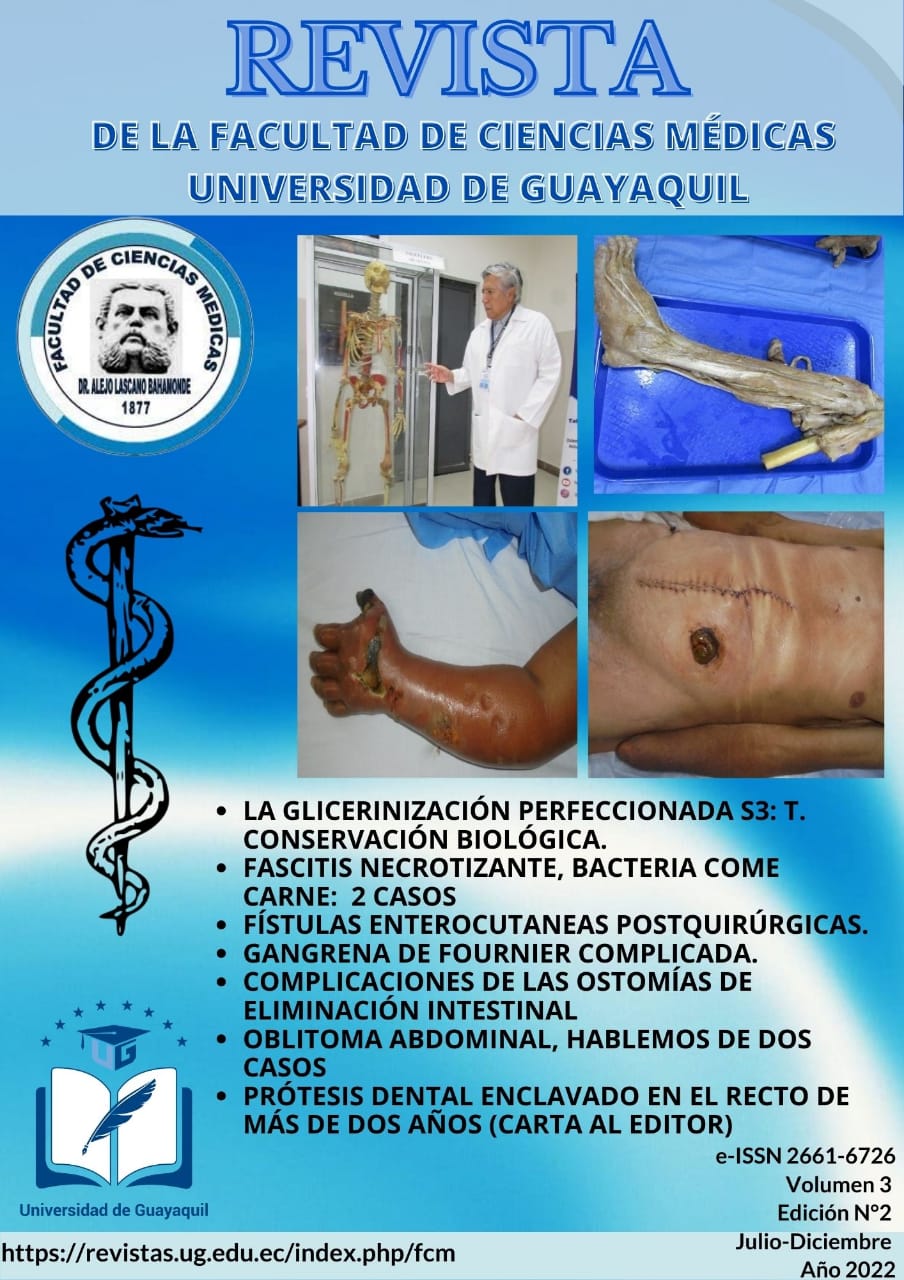Necrotizing fascitis, flesh-eating bacteria: Let's talk about 2 Cases.
Keywords:
Necrotizing fasciitis, streptococcus pyogenesAbstract
Necrotizing fasciitis is a rare but rapidly progressive, serious, life-threatening infection with destruction and necrosis of fat and fascia and skin. Tissue destruction can affect any part of the body, but is more common in the extremities.
Group A streptococci (Streptococcus pyogenes), colonizing pathogens of the skin and throat; On certain occasions and conditions, they can cause serious infections such as necrotizing fasciitis and streptococcal toxic shock, also known as carnivorous bacteria or "meat-eaters".
The entrance door can be through a cut, scrape, insect bite, bite, surgical wound, etc. Those with diabetes, HIV, chronic kidney disease, cirrhosis, cancer, transplant recipients, etc. are more at risk.
Both patients presented necrotizing dermal lesions, with a fetid odor, but not very painful on palpation, with a history of having suffered an insect bite, but with a lot of itching, which caused scratching of the lesions, which increased in color reddish erythema and edema. ) to necrotic, one of the patients presented toxic shock.
References
Frías Sánchez Z, Pantoja Garrido M, Pantoja Rosso FJ, Vico de Miguel FJ. Fascitis necrotizante en cicatriz de cesárea. A propósito de un caso. Ginecol. obstet. Méx. 2018 [acceso 13/04/2020];86(8):554-9. Disponible en: http://www.scielo.org.mx/scielo.php?script=sci_arttext&pid=S0300-90412018000800554&lng=es.
Díaz Carrillo HG, Álvarez Consuegra W, Tamayo Pérez R. Fascitis necrotizante: revisión, conceptos recientes en etiopatogenia y diagnóstico. Revista Electrónica Dr. Zoilo E. Marinello Vidaurreta. 2018 [acceso 13/04/2020];4(43). Disponible en: http://revzoilomarinello.sld.cu/index.php/zmv/article/view/1332/pdf_503
Ferrer Lozano Y, Morejón Trofimova Y. Fascitis necrosante. Actualización del tema. Medisur. 2018 [acceso 12/05/2020];16(6):920-9. Disponible en: http://scielo.sld.cu/scielo.php?script=sci_arttext&pid=S1727-897X2018000600015&lng=es.
Pedro Parra Caballero.- Actualización en fascitis necrotizante. Semin Fund Esp Reumatol. 2012;13(2):41–48
Marta Fernández de Torres. Fascitis necrotizante. Diagnóstico y tratamiento a propósito de un caso. NUEVO HOSP. (Versión digital). Febrero 2022; Vol. XVIII Nº 1.
Juan Jacobo Ayala-Gaytán. Fascitis necrotizante y choque tóxico en infección por estreptococo grupo A. Rev Med Inst Mex Seguro Soc 2011; 49 (4): 425-432.
René Alfredo Bourlon Cuellar. Síndrome de choque tóxico secundario a fascitis necrosante por Streptococcus pyogenes. Med Int Mex 2010;26(4):397-400
Yusleidy Jiménez García. Fascitis necrotizante. Revista Cubana de Cirugía. 2020 (Oct-Dic);59(4):e_970.
PELLICER GARCÍA. Fascitis necrotizante fulminante tras inyección intramuscular glútea. Revista Española de Cirugía Osteoarticular. Nº 259. Vol. 49. JULIO SEPTIEMBRE 2014.
Erick Héctor Hernández González. Fascitis necrotizante. Rev. Arch Med Camagüey Vol19(6)2015
Yovanny Ferrer Lozano. Diagnóstico y tratamiento de la fascitis necrosante. abril 2014 | Volumen 12 | Numero 2.





